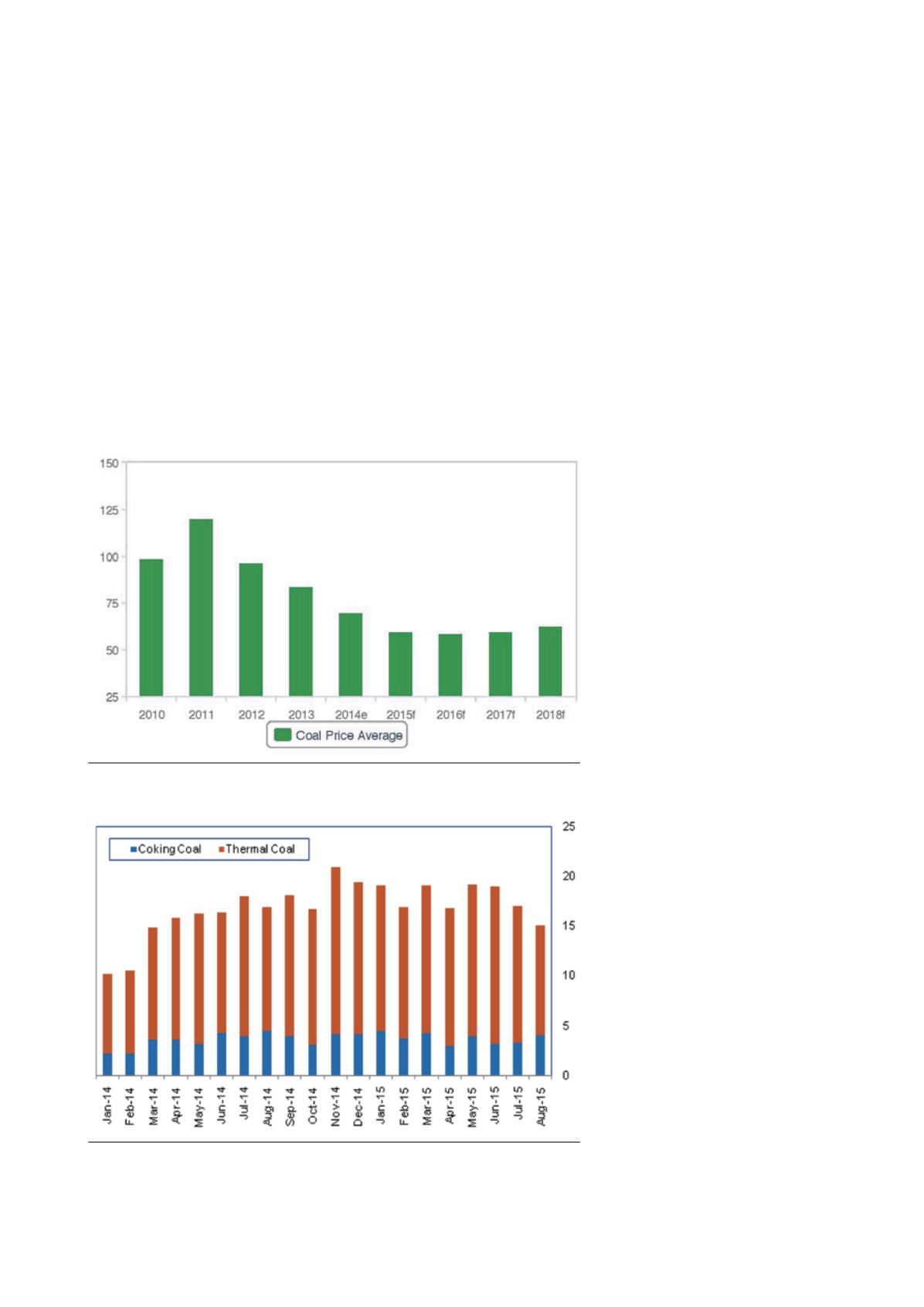
of coal per man-shift in opencast and
underground mines, respectively,
which pales in comparison to Australia
where opencast coal and underground
mining production per man-shift
amounted to 74 t and 40 t, respectively.
Coal India’s machines also work
15 hr/day, compared with 22 hr/day in
Australia.
Brakes on growth to
remain
Barring any announcements of capital
injections and major increases in
CAPEX, BMI is reluctant to further
upgrade its already optimistic
forecasts of annual average growth of
7.4% in 2016 – 2019.
Although it is possible for
Coal India to hit its production targets
by sustaining annual average
production growth of 13.4% during
2016 – 2020, four key obstacles remain,
besides improving productivity and
production:
n
n
The opening of new mines could
remain hampered if environmental
clearances are not made in
an expedient manner. As of
August 2014, Coal India had 48
mines awaiting environmental
clearances. It currently has close to
500 mines in operation.
n
n
Coal India might not be able
to construct sufficient railway
infrastructure by 2020 to
improve offtake, which would
limit efforts to open mines that
could add about 300 milion tpa
of coal production from the
states of Odisha, Jharkhand and
Chhattisgarh.
n
n
Given India’s insistence on not
exceeding its targeted budget
deficit, the government will need
to come up with an innovative
workaround to finance the
purchase of new freight trains
by India Railways in order to
transport the coal, other than
raising railway fares, as the cost
of railway travel is an extremely
sensitive issue to the public.
n
n
The threat of strikes by mining
unions could derail efforts to
improve productivity. Given that
Coal India produces approximately
80% of India’s coal, by going
on strike the coal unions could
plunge the entire country into
darkness. Given the opposition
faced by the government when it
wanted to privatise a small stake
of Coal India in the past year,
the threat of renewed strikes by
union workers poses downside
risks on Coal India’s ability to
raise further capital from equity
markets to fund major upgrades
in equipment. India’s efforts to
introduce competition to the
de facto monopoly by allowing
foreign private players might
result in long-lasting strikes, which
could significantly reduce the
company’s operating performance
and stymie its efforts to raise
productive capacity by acquiring
more modern equipment.
Imports to remain strong
– for now
Coal imports will remain strong over
the coming quarters as India will
continue to be unable to meet domestic
coal consumption. Even though
domestic coal production is rising
faster than domestic consumption,
seaborne coal demand from power
Prices to remain relatively low: Newcastle thermal coal (US$/t).
Source: BMI, Bloomberg.
Coal imports to remain elevated: India – thermal and metallurgical coal imports
(million t).
Source: BMI, Bloomberg.
16
|
World Coal
|
January 2016


